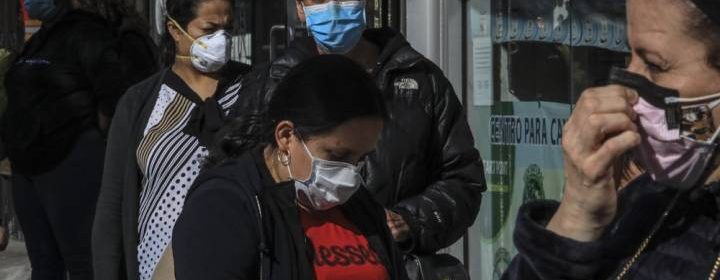Coronavirus: Struggles in U.S., Brazil show fight against COVID-19 not over yet

Even as countries moved forward Wednesday with easing their coronavirus restrictions and restarting their economies, a large cluster of infections linked to a market in India and the first lockdown of a major Brazilian city highlighted that the battle against the pandemic was far from won.
In the United States, President Donald Trump emphasized his determination to see a quick return to normalcy with a visit to an Arizona mask factory that was expected to kick off his regular travels as the nation emerges from seven weeks of virus-imposed isolation. The push to ease stay-at-home orders comes even as U.S. infection rates outside the New York metropolitan area are rising.
In India, which partly eased its lockdown Monday, health authorities were rushing to contain an outbreak of the virus at one of Asia’s largest markets for perishable goods. The market in the southern city of Chennai, spread over more than 250 acres, had remained open throughout the lockdown and is now tied to at least 1,000 cases.
Another 7,000 people connected to now-shuttered Koyambedu market were being traced and quarantined, a huge task given that the facility is critical to the food supply across Tamil Nadu and neighbouring states.
The market cluster contributed to India’s biggest single-day increase in virus infections yet, with authorities on Tuesday reporting 3,900 cases and 195 deaths. The health ministry attributed the spike to reporting delays by state governments, but experts remain worried about a potential health catastrophe in a country of 1.3 billion people and a medical system strained even in the best of times.
The capital of Brazil’s tropical Maranh?o state ground largely to a halt Tuesday, becoming the first major city in the country to enter a lockdown in the hopes of preventing the coronavirus from overwhelming the health care system of one of the nation’s poorest states.
[ Sign up for our Health IQ newsletter for the latest coronavirus updates ]
Some 1.5 million people in S?o Luis and three neighbouring cities have been confined to their homes, except for a handful of essential tasks. The vast majority of businesses have been shuttered, as have schools and public transport. Parks are closed, and residents cannot go out to exercise.
The decree from the state governor will last 10 days to start and applies to one-fifth the state’s population. It comes despite President Jair Bolsonaro’s insistence that only the elderly and other high-risk populations should stay home. The president and his followers have repeatedly criticized local leaders who imposed more stringent restrictions in the face of surging coronavirus cases.
When the still-locked-down area is included, new infections in the U.S. appear to be declining, according to the AP analysis. It found that the five-day rolling average for new cases has decreased from 9.3 per 100,000 people three weeks ago on April 13 to 8.6 on Monday.
But subtracting the New York area from the analysis changes the story. Without it, the rate of new cases in the U.S. increased over the same period from 6.2 per 100,000 people to 7.5.
While the daily number of new deaths in the New York area has declined markedly in recent weeks, it has essentially plateaued in the rest of the U.S. Without greater New York, the rolling five-day average for new deaths per 500,000 people dropped slightly from 1.86 on April 20th to 1.82 on Monday.
New York Gov. Andrew Cuomo said the national debate over when to reopen ultimately boils down to the value placed on people’s lives.
“The faster we reopen, the lower the economic cost — but the higher the human cost, because the more lives lost,” he said. “That, my friends, is the decision we are really making.”
Source: Read Full Article

